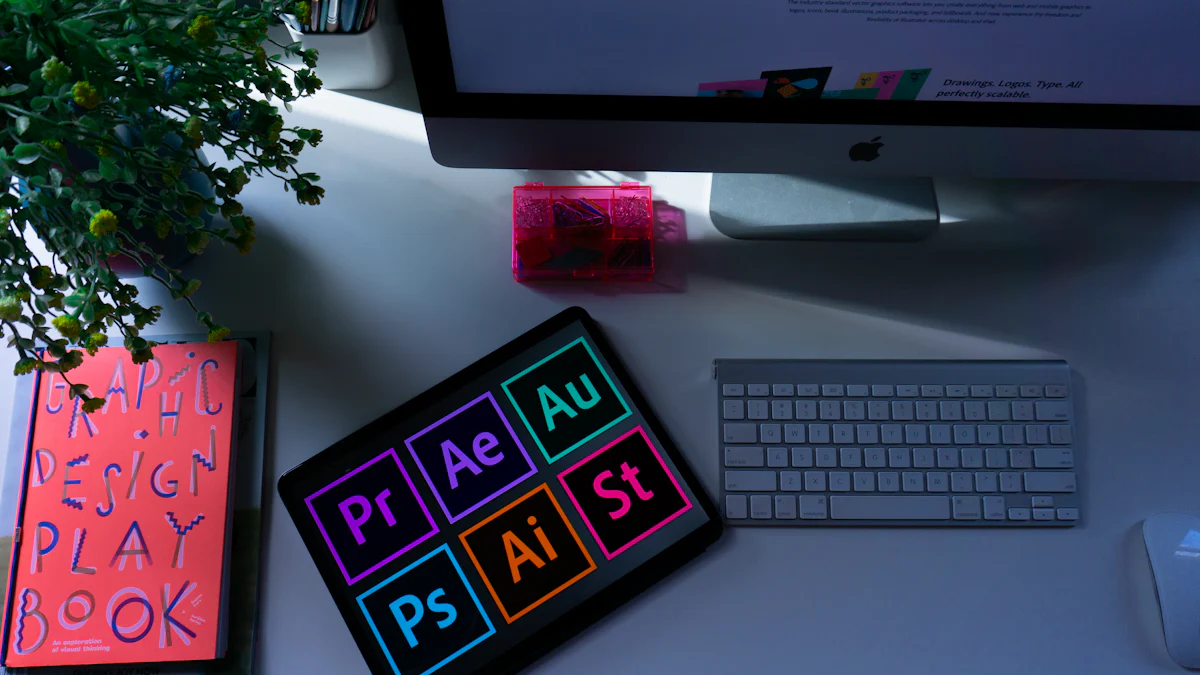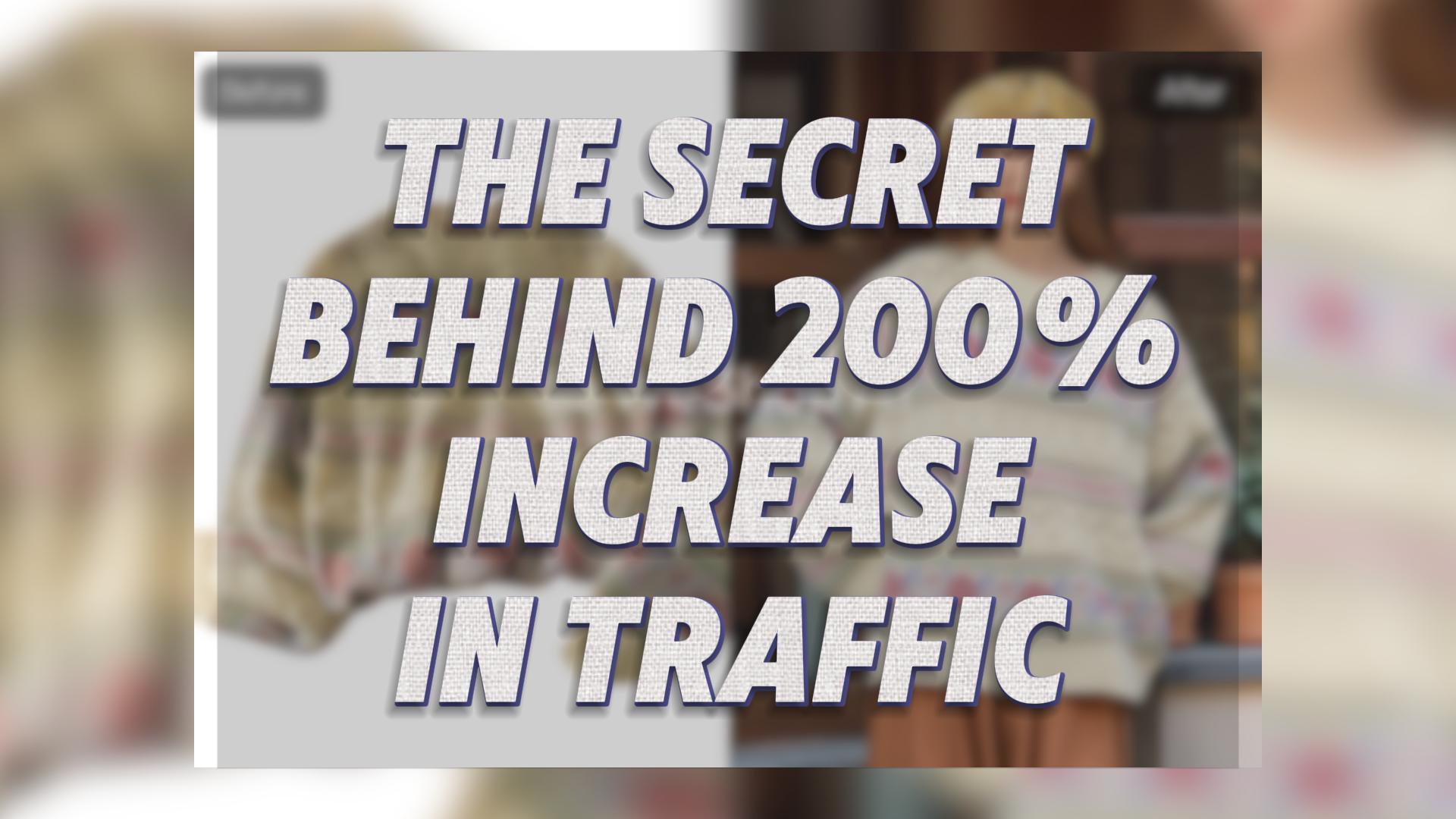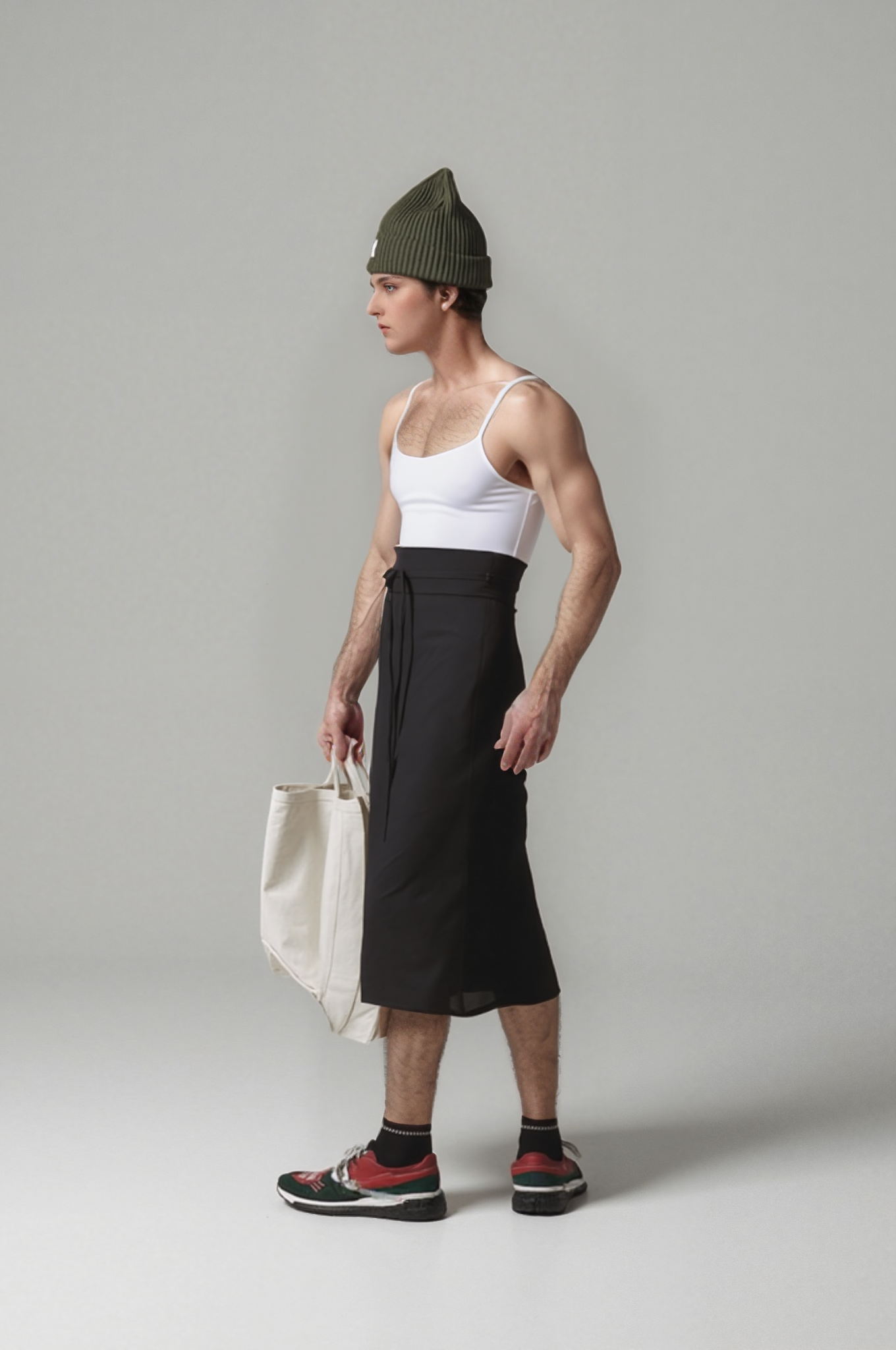Pic Copilot, available at https://www.piccopilot.com, has emerged as a game-changer in the world of e-commerce design. This tool leverages advanced AI to create high-quality, AI-powered product photos in record time. Its features, such as instant background removal and AI fashion models, streamline the image creation process for businesses. The growing adoption of AI in e-commerce reflects its impact, with over 50% of businesses now using AI technologies to enhance their operations. Pic Copilot stands out by integrating AI with human creativity, offering tools like multilingual image translation and AI avatars to cater to diverse audiences.
The market for AI-powered design tools is projected to grow from $5.54 billion in 2024 to $6.77 billion in 2025, driven by automation and personalization demands. With such rapid advancements, how does Pic Copilot compare to other top tools in 2025?
Overview of Pic Copilot
Key Features
Pic Copilot offers some of the best features in the AI design tool market. Its advanced features cater to the needs of e-commerce business owners by simplifying image creation and enhancing product presentation. The tool includes virtual try-on technology, which allows customers to visualize products on themselves before purchasing. AI-driven ad creation automates the process of crafting advertisements tailored to specific audiences. Instant background removal ensures cleaner and more professional product images.
The multilingual image translation feature helps businesses reach global audiences by translating product images into multiple languages. AI fashion models and AI avatars improve visual appeal and engagement. The customizable product scene editor enables users to create customized product images with ease. AI backgrounds and AI dubbing further enhance the tool’s capabilities, making it a comprehensive solution for creating high definition product photos. These features position Pic Copilot as a leading ai-powered tool for e-commerce.
Pricing and Plans
Pic Copilot employs a tiered subscription model, offering flexibility to users with varying needs. This pricing structure provides access to different levels of features, ensuring value for money. The freemium option allows users to explore basic functionalities at no cost, while premium plans unlock advanced features like AI-powered productivity chatbots and document creation tools. Flat-rate subscriptions are also available, offering consistent pricing for users who require regular access to the tool. This approach ensures that e-commerce business owners can choose a plan that aligns with their budget and requirements.
Target User Groups
Pic Copilot primarily targets e-commerce business owners who need efficient tools for image creation and product presentation. Small businesses benefit from its cost-effective plans and easy-to-use interface. Larger enterprises leverage its advanced features, such as AI-driven ad creation and multilingual image translation, to scale their operations globally. Content creators and marketers also find value in its integration capabilities, which streamline workflows and enhance productivity. Pic Copilot’s versatility makes it suitable for a wide range of users, from startups to established brands.
Comparison Criteria
Features and Functionality
AI tools for retail and e-commerce vary significantly in their features. Pic Copilot excels in product photo creation with tools like instant background removal, AI avatars, and multilingual image translation. These features streamline workflows and enhance global reach.
| Tool Name | Best Features | Ratings |
|---|---|---|
| WeShop AI | Quick setup, platform-agnostic, improves conversion | Shopify: 4.6/5 |
| Algolia | Personalized search results, boosts popular content, intelligent experimentation | G2: 4.5/5 |
| Klaviyo | Predictive analytics, audience segmentation, optimal email timing | G2: 4.6/5 |
| Buffer AI Assistant | Engaging social media posts, content repurposing | G2: 4.3/5 |
Ease of Use
Ease of use plays a crucial role in tool adoption. Pic Copilot offers an intuitive interface that simplifies the creation process. Its drag-and-drop functionality and customizable templates reduce the learning curve for users. In contrast, tools like Salesforce Einstein and Adobe Sensei require more technical expertise, which may deter small businesses.
User feedback highlights Pic Copilot’s seamless integration with existing workflows. This feature enhances productivity and minimizes disruptions. Tools like Plerdy and OptiMonk AI also receive praise for their user-friendly designs, but their focus on UX analysis and visitor segmentation limits their appeal to broader audiences.
Pricing and Value for Money
Pic Copilot provides excellent value for money with its flexible pricing model. The free plan offers basic features, while the $8.99/month subscription unlocks advanced tools. Competitors like Pictorial charge $19/month, and AI-powered Product Photos offers a freemium model with premium plans starting at $15.
| Tool | Pricing Model | Starting Price | Value for Money Rating |
|---|---|---|---|
| Pic Copilot | Freemium | $8.99/month | 4.6 |
| Pictorial | Paid | $19/month | 4 |
| WeShop AI | Freemium | $0 (Monthly: $9.9, Points Package: starting at $49) | 5.0 |
Pic Copilot’s affordability and comprehensive features make it a top choice for businesses seeking cost-effective solutions.
User Feedback and Reviews
Pic Copilot has received widespread attention for its innovative features. Real user reviews highlight its ability to simplify the creation of professional product photos. Many users praise its intuitive interface, which reduces the time needed for tasks like background removal and AI avatar integration. E-commerce business owners often mention how the tool enhances their workflow efficiency. They find the multilingual image translation feature particularly useful for reaching international audiences.
Users frequently compare Pic Copilot to other tools like Pictorial and Designify. While Pic Copilot excels in AI-driven photo creation, some users note that Pictorial offers more advanced customization options. However, Pic Copilot’s affordability and ease of use make it a preferred choice for small businesses. Larger enterprises appreciate its scalability and seamless integration with existing systems.
Feedback also highlights the tool’s limitations. Some users report occasional inaccuracies in AI-generated backgrounds. Others mention that the virtual try-on feature could benefit from further refinement. Despite these concerns, most users agree that Pic Copilot delivers excellent value for money. Its pricing model, which includes a free plan, allows businesses to explore its features without financial risk.
The integration of chatgpt technology into Pic Copilot has also garnered positive feedback. Users appreciate how chatgpt enhances the tool’s functionality by providing instant support and suggestions during the creation process. This feature reduces the learning curve for new users and improves overall satisfaction.
Overall, Pic Copilot has established itself as a reliable tool for e-commerce design. Its focus on user-friendly features and affordability ensures its popularity among diverse user groups.
Detailed Comparisons

Pic Copilot vs. Pictorial
Feature Comparison
Pic Copilot and Pictorial both offer robust image generation capabilities. However, their feature sets differ significantly. Pic Copilot excels in customization, collaboration with designers, and boosting click-through rates. It also supports product showcasing, making it ideal for e-commerce businesses. Pictorial, on the other hand, focuses on diverse designs, professional end images, and unique features like URL extraction and AI refactoring.
| Feature | Pic Copilot | Pictorial |
|---|---|---|
| Image generation | Yes | Yes |
| Customization | Yes | No |
| Collaboration with designers | Yes | No |
| Product showcasing | Yes | No |
| Click-through rate boosting | Yes | No |
| Url extraction | No | Yes |
| Prompt selection | No | Yes |
| Ai refactoring | No | Yes |
| Diverse designs | No | Yes |
| Professional end images | No | Yes |
Pricing Comparison
Pic Copilot offers a free plan, making it accessible to users with limited budgets. Pictorial also provides a free option but charges $19 per month for its premium features.
| Product | Pricing Model | Starting Price |
|---|---|---|
| Pic Copilot | Free | N/A |
| Pictorial | Free | $19/month |
User Experience
Pic Copilot’s intuitive interface and seamless integration with workflows make it user-friendly. Its focus on e-commerce needs, such as background removal and AI-driven product showcasing, enhances usability. Pictorial, while offering advanced design options, lacks the same level of customization and collaboration features, which may limit its appeal to e-commerce users.
Pic Copilot vs. AI-powered Product Photos such as WeShop AI
Feature Comparison
Pic Copilot specializes in creating customized product images to boost sales and click-through rates. It includes features like image generation, customization, and collaboration. AI-powered Product Photos, however, offers a broader range of functionalities, including a customizable scene editor and background removal.
| Feature | Pic Copilot | AI-powered Product Photos e.g WeShop AI |
|---|---|---|
| Focus | Customized product images to boost sales and CTR | Broader range including image editing and optimization |
| Key Features | Image generation, customization, collaboration | Customizable scene editor, background removal, etc. |
| Target User Group | Sellers looking to enhance product visuals | Users needing comprehensive image editing capabilities |
Pricing Comparison
Pic Copilot provides a free plan, while AI-powered Product Photos operates on a freemium model. Its Pro plan starts at $15, and the Plus plan costs $35.
| Feature | AI-powered Product Photos e.g WeShop AI | Pic Copilot |
|---|---|---|
| Pricing Model | Freemium | Freemium |
| Starting Price | $0 | N/A |
| Pricing Packages | Free plan: $0, Monthly plan: $9.9 | No specified packages |
User Experience
Pic Copilot focuses on e-commerce businesses, offering features like virtual try-ons and background removal. These tools make product images more engaging for buyers. AI-powered Product Photos caters to a wider audience, providing comprehensive image editing options. User ratings reflect their popularity, with Pic Copilot scoring 4.9 out of 5 and AI-powered Product Photos achieving a perfect 5.
| Tool | User Rating | Number of Ratings |
|---|---|---|
| AI-powered Product Photos e.g WeShop AI | 4.6 | 45 |
| Pic Copilot | 4.3 | 6 |
Pic Copilot vs. Designify
Feature Comparison
Pic Copilot offers unique features tailored for e-commerce, such as virtual try-ons, AI product ads, and multilingual image translation. Other standout tools include AI dubbing, background removal, and AI avatars. Designify focuses on basic image editing and lacks these advanced capabilities.
- Virtual Try On
- AI Product Ads Creator
- Instant Backgrounds
- Image Translation
- AI Dubbing
- Background Remover
- AI Backgrounds
- AI Fashion Models
- AI Avatars
Pricing Comparison
Pic Copilot’s free plan provides excellent value for small businesses. Designify, while affordable, does not match Pic Copilot’s feature set, making it less cost-effective for e-commerce users.
User Experience
Pic Copilot’s user-friendly interface and advanced features make it a favorite among e-commerce businesses. Designify, while easy to use, lacks the depth and customization options that Pic Copilot offers. This limitation makes it less suitable for businesses seeking to enhance product visuals.
Pros and Cons of Pic Copilot
Advantages
Pic Copilot offers several advantages that make it a valuable tool for e-commerce businesses. Its ability to enhance product imagery and videos significantly improves marketing outcomes. Users have reported a 54.7% increase in click-through rates, showcasing its effectiveness in driving sales. Features like virtual try-ons and background removalstreamline the creation process, saving time and resources for businesses. These tools also allow sellers to create engaging product visuals tailored to diverse audiences.
The platform excels in task automation, reducing manual effort in image editing and ad creation. Virtual try-ons, for instance, cater to multiple skin tones, ensuring inclusivity in product representation. Background removal and AI-generated backgrounds simplify content creation, enabling businesses to produce professional-quality images quickly. Additionally, Pic Copilot supports multilingual image translations, helping brands expand their global reach.
Cost savings represent another key advantage. By automating repetitive tasks, Pic Copilot reduces the need for external design services. This makes it an affordable solution for small businesses. Its integration of chatgpt technology further enhances user experience by providing instant support and suggestions during the creation process. This feature minimizes the learning curve, allowing users to focus on their core business goals.
Disadvantages
Despite its strengths, Pic Copilot has some limitations. The potential for data breaches raises concerns about the security of sensitive user information. Storing large amounts of data increases the risk of unauthorized access. Users have also expressed concerns about third-party access to their data and how it might be used.
The platform’s reliance on internet connectivity can pose challenges. A stable connection is essential for uninterrupted use, which may not always be feasible for all users. Additionally, some users have reported occasional inaccuracies in AI-generated content, such as backgrounds or virtual try-ons. These issues can affect the overall quality of the final image.
Customization options remain limited compared to some competitors. Businesses seeking highly tailored solutions may find Pic Copilot less flexible. Ethical concerns, such as potential biases in AI-generated content, also warrant consideration. These limitations highlight areas where the platform could improve to better serve its users.
Use Case Scenarios

When Pic Copilot Excels
Pic Copilot performs exceptionally well in scenarios where e-commerce businesses need to create customized product visuals. Its features, such as AI-driven image generation and multilingual image translation, cater specifically to online sellers. These tools help businesses enhance their product presentation and reach global audiences. For example, the platform’s virtual try-on feature allows customers to visualize products, which improves engagement and boosts sales.
The tool’s ability to streamline the creation process makes it ideal for small businesses with limited resources. Its drag-and-drop functionality and instant background removal save time and reduce the need for external design services. Digital marketers also benefit from Pic Copilot’s AI-powered ad creation, which automates the development of targeted campaigns. This feature helps businesses improve click-through rates and drive conversions.
Compared to competitors like Pictorial, Pic Copilot focuses on e-commerce-specific needs. While Pictorial excels in creating professional graphics for blogs and messaging, Pic Copilot prioritizes product showcasing and collaboration. The table below highlights these differences:
| Feature/Aspect | Pic Copilot | Pictorial |
|---|---|---|
| Primary Focus | Customized product images for e-commerce | Professional graphics for blogs and messaging |
| Key Features | Image generation, customization, collaboration | Diverse graphics generation |
| Target Users | E-commerce owners, digital marketers, designers | General content creators |
When Other Tools Might Be Better
Other AI design tools may outperform Pic Copilot in scenarios requiring advanced customization or broader design capabilities. For instance, Pictorial offers diverse graphics generation and unique features like URL extraction, which are better suited for content creators focusing on blogs or social media. Similarly, AI-powered Product Photos provides a customizable scene editor, making it a strong choice for users needing comprehensive image editing options.
Designify, another competitor, excels in basic image editing tasks. Its simplicity and affordability make it a good option for users who do not require advanced features like virtual try-ons or AI avatars. Businesses seeking tools for website optimization or visitor segmentation might find platforms like WeShop AI or OptiMonk AI more suitable.
While Pic Copilot integrates chatgpt technology to enhance user experience, some users may prefer tools with a broader range of functionalities. For example, chatgpt integration in other platforms might focus on content repurposing or predictive analytics, which could align better with specific business goals.
Pic Copilot stands out as a powerful AI design tool for e-commerce. Its features, such as Virtual Try On and AI Product Ads Creator, enhance customer engagement and streamline the creation process. User feedback highlights its efficiency and ease of use, with click-through rates improving by 54.7%. While competitors like AI-powered Product Photos and Pictorial offer unique strengths, Pic Copilot’s focus on e-commerce needs makes it a top choice for businesses aiming to boost sales.
To select the right tool, businesses should:
- Identify their specific needs and goals.
- Evaluate tools based on performance, customization, and cost.
- Conduct pilot tests to ensure compatibility with their workflows.
Aligning the tool choice with business objectives ensures maximum ROI and operational efficiency. Tools like WeShop AI, with chatgpt integration, simplify workflows and empower businesses to achieve their goals.


